Since the appearance of modern humans some 250,000 years ago, our species has substantially altered the Earth. In the Pleistocene, Homo sapiens was a successful hunter and managed to hunt several species to extinction. In the post-Ice Age Holocene, farming, animal husbandry, trade, and increasing mobility enabled humans to become a major force in the Earth’s system. The spread of industry and technology since the eighteenth century is affecting ever larger areas of the planet, and continue to unfold in new and ever-changing ways. Instead of living in biomes, or natural habitats, today we are living in “anthromes,” human-made cultural landscapes that are characterized by intensive agriculture, buildings, and exploitation of natural resources. We are even able to artificially recreate nature, such as a machine that can imitate the movement and sound of birds. We have to decide what role we will allow nature to play and the degree to which we will shape it in the future.

Chirping machine by Bontemps, Inv.-Nr: 33769
Markus Gruber
Chirping machine by Bontemps, Inv.-Nr: 33769
Markus Gruber
Drawn by Markus Gruber, 2014.  This work is licensed under a Creative Commons Attribution-NonCommercial-NoDerivatives 4.0 International License.
This work is licensed under a Creative Commons Attribution-NonCommercial-NoDerivatives 4.0 International License.
The chirping machine
Text and images by Marcus Gruber
www.marcus-gruber.com
University of the Arts (UdK), Berlin

Chirping machine, Paris, around 1900
“Could you explain to me why they killed Rudi, then stuffed him and put him in a box?”
Chirping machine, Paris, around 1900
“Could you explain to me why they killed Rudi, then stuffed him and put him in a box?”
Drawn by Markus Gruber , 2014.  This work is licensed under a Creative Commons Attribution-NonCommercial-NoDerivatives 4.0 International License.
This work is licensed under a Creative Commons Attribution-NonCommercial-NoDerivatives 4.0 International License.
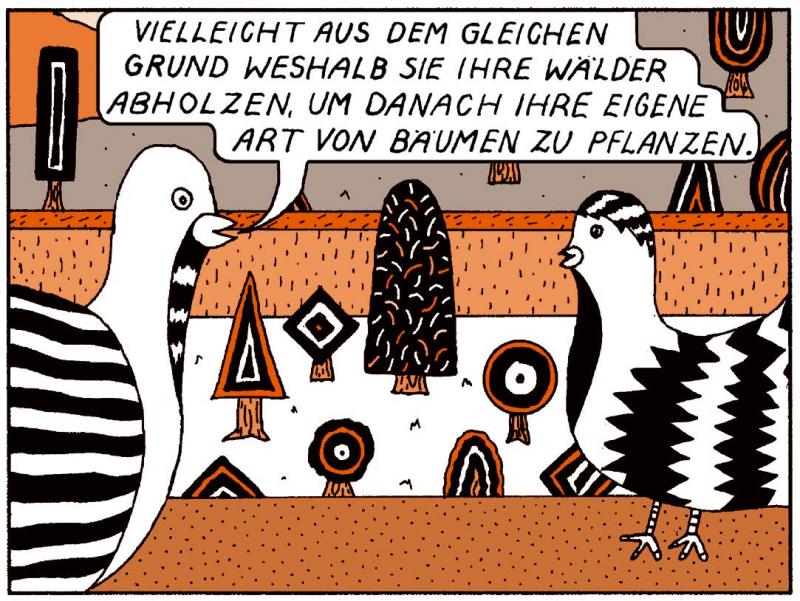
“Maybe for the same reasons they are cutting down the forests, then planting their own trees.”
“Maybe for the same reasons they are cutting down the forests, then planting their own trees.”
Drawn by Markus Gruber , 2014.  This work is licensed under a Creative Commons Attribution-NonCommercial-NoDerivatives 4.0 International License.
This work is licensed under a Creative Commons Attribution-NonCommercial-NoDerivatives 4.0 International License.
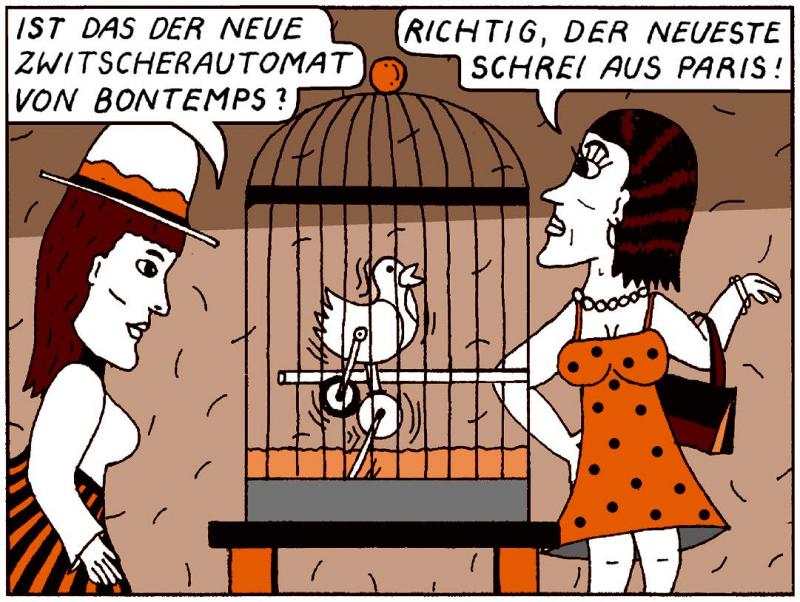
“Is this the new chirping machine made by Bontemps?”
“Yes, it is all the rage in Paris!”
“Is this the new chirping machine made by Bontemps?”
“Yes, it is all the rage in Paris!”
Drawn by Markus Gruber , 2014.  This work is licensed under a Creative Commons Attribution-NonCommercial-NoDerivatives 4.0 International License.
This work is licensed under a Creative Commons Attribution-NonCommercial-NoDerivatives 4.0 International License.
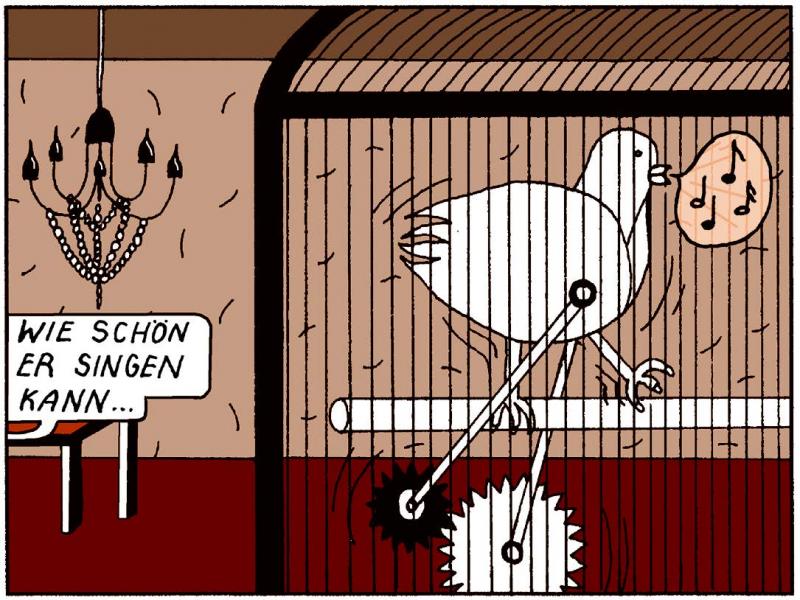
“How beautifully he can sing…”
“How beautifully he can sing…”
Drawn by Markus Gruber , 2014.  This work is licensed under a Creative Commons Attribution-NonCommercial-NoDerivatives 4.0 International License.
This work is licensed under a Creative Commons Attribution-NonCommercial-NoDerivatives 4.0 International License.
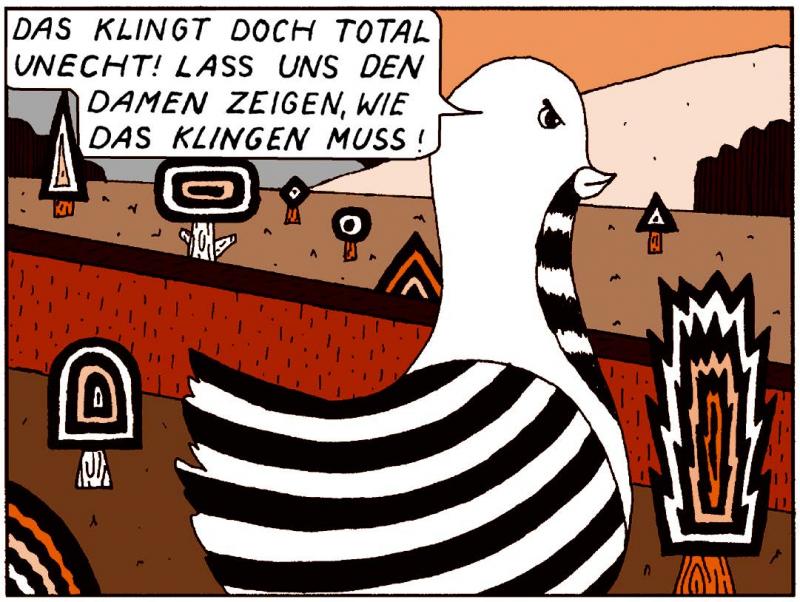
“That sounds totally fake! Let’s show the ladies how it is supposed to sound!”
“That sounds totally fake! Let’s show the ladies how it is supposed to sound!”
Drawn by Markus Gruber, 2014.  This work is licensed under a Creative Commons Attribution-NonCommercial-NoDerivatives 4.0 International License.
This work is licensed under a Creative Commons Attribution-NonCommercial-NoDerivatives 4.0 International License.
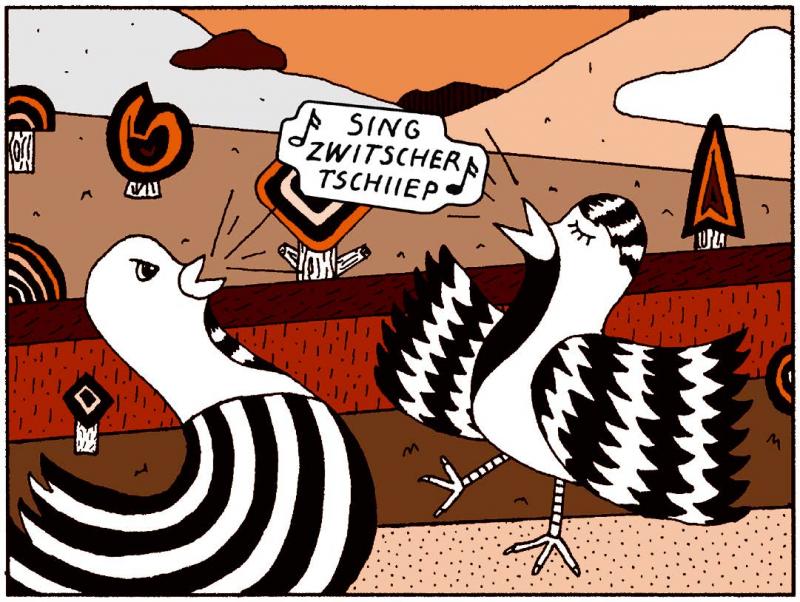
Drawn by Markus Gruber , 2014.  This work is licensed under a Creative Commons Attribution-NonCommercial-NoDerivatives 4.0 International License.
This work is licensed under a Creative Commons Attribution-NonCommercial-NoDerivatives 4.0 International License.

“Ugh! Look at those disgusting birds!”
“I’ll take care of them!”
“Ugh! Look at those disgusting birds!”
“I’ll take care of them!”
Drawn by Markus Gruber , 2014.  This work is licensed under a Creative Commons Attribution-NonCommercial-NoDerivatives 4.0 International License.
This work is licensed under a Creative Commons Attribution-NonCommercial-NoDerivatives 4.0 International License.

“Go away!”
“I don’t understand the world anymore …”
“Go away!”
“I don’t understand the world anymore …”
Drawn by Markus Gruber , 2014.  This work is licensed under a Creative Commons Attribution-NonCommercial-NoDerivatives 4.0 International License.
This work is licensed under a Creative Commons Attribution-NonCommercial-NoDerivatives 4.0 International License.
Artist’s comment
Prior to my work on Bonetemps’ Chirping machine I had only read Hans Christian Andersen’s fairy tale about the nightingale. I didn’t know that a machine in which mechanical stuffed birds could be made to sing like real birds actually existed. This bird symbolizes a social paradox—we prefer to imitate rather than protect it.
How to cite
Gruber, Marcus. “Chirping Machine.” Environment & Society Portal, Multimedia Library, 2014. http://www.environmentandsociety.org/node/6661/.
The comic also appears in Alexandra Hamann, Reinhold Leinfelder, Helmuth Trischler, and Henning Wagenbreth, eds., Anthropozän – 30 Meilensteine auf dem Weg in ein neues Erdzeitalter. Eine Comic-Anthologie (Munich: Deutsches Museum, 2014).

This work is licensed under a Creative Commons Attribution-NonCommercial-NoDerivatives 4.0 International License.


